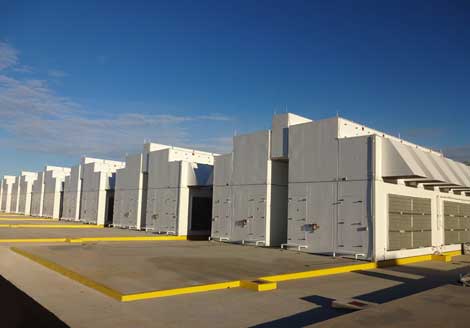
Microsoft has dished out $160,000 in grants to four academic research projects focused on data center energy efficiency.
Research teams from four different U.S. universities each received $40,000 from the Redmond, Wash., tech giant to look into resource-efficient cloud computing, improving data center efficiency and cost through software reliability analysis, provisioning cooling systems and microgrids.
While compute, network and storage technologies progress by leaps and bounds, innovation in mechanical and electrical infrastructure technologies used in buildings that house the hardware moves very slowly. Nearly half of all energy a typical data center receives is used by the building’s cooling systems and lost as the energy goes through multiple conversions along the electrical chain.
The data center research teams that received the grants come from Stanford University, Carnegie Mellon University, Rutgers University and South Dakota State University.
Microsoft awarded the grants as part of its annual Software Engineering Innovation Foundation program, which usually supports software engineering research teams around the world. This is the first year the company included data center innovation and energy efficiency in the program, Sean James, senior research program manager for Microsoft’s Global Foundation Services division, wrote in a blog post announcing the grants.
The company requests research teams to submit proposals for grants each year. Out of 100-plus proposals submitted in the latest round, 12 received the funds.
Work With Academia Yields Big Ideas
Like many technology companies do, Microsoft partners with academia on an on-going basis, using the research community as a source of innovation.
“As Microsoft continues to find ways to transform the energy supply chain toward greater efficiency and reduced environmental impact, we have seen that driving innovation in energy often requires a close partnership between industry and academia,” James wrote.
Microsoft’s recent project to test the idea of installing a fuel cell directly into the IT rack as a power source for the hardware came out of the company’s collaboration with the National Fuel Cell Research Center at University of California, Irvine, for example.
In November 2013, the company published a white paper, outlining fuel cells that convert methane into electricity installed directly into the rack. The approach has the potential to reduce consumption of coal energy and increase energy efficiency by eliminating a lot of electrical infrastructure equipment that sits between the utility substation and the IT rack at a typical data center.
This research project is a piece of a greater vision – something Microsoft researchers call “Data Plant.” The idea is to install data center modules at water treatment plants or landfills, where methane is abundant, and to use methane to fuel computing.
Microsoft has already deployed a proof-of-concept data plant at a water-treatment facility in Cheyenne, Wyoming.
About the Author
You May Also Like







